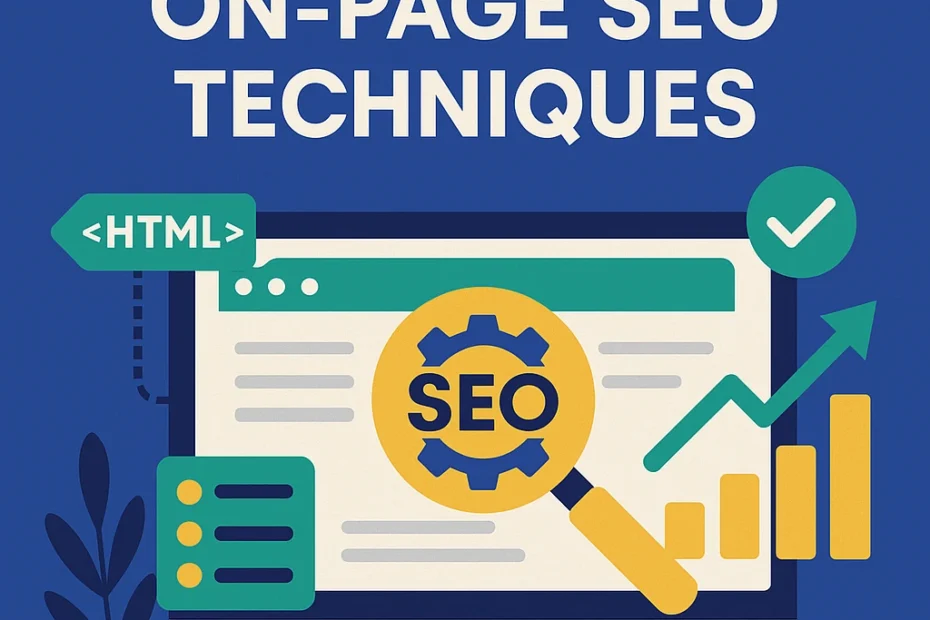You’ve grasped what SEO is and learned how vital keyword research is. Excellent! The crucial next step is optimizing the pages themselves. Welcome to the world of On-Page SEO – tuning your content and code for maximum search engine visibility.
Think of on-page SEO as making each page on your site perfectly clear and valuable to both search engines like Google and your human visitors. Ready to fine-tune? Let’s get started with this guide from WordPress Ranker.
Why On-Page SEO Matters
On-page factors are directly within your control. By optimizing them, you tell search engines exactly what your content is about and signal its quality, significantly boosting your chances of ranking for your target keywords.
Key On-Page Optimization Elements:
1. Your Content: The Foundation
Everything starts here. Without great content, other optimizations won’t get you far. Aim for content that is:
- Deeply Relevant: Directly addresses the search intent behind your target keywords.
- High Quality & Comprehensive: Provides real value, answers questions thoroughly, and is better than competing pages.
- Unique & Engaging: Offers a fresh perspective or useful insights; keeps readers interested.
- Readable: Well-structured with clear language, short paragraphs, and maybe lists or bullet points.
2. Page Titles (The <title> Tag)
This is arguably the most important on-page element. It’s your page’s headline in search results and browser tabs. Best practices, according to Google:
- One H1 tag per page: Use it for your main page title, including the primary keyword.
- Place your primary keyword near the beginning.
- Keep it concise – aim for under 60 characters.
- Make it descriptive and enticing to encourage clicks.
- Consider adding your brand name at the end (e.g., | WordPress Ranker).
3. Meta Descriptions: Your Search Ad Snippet
While not a direct ranking factor, this description heavily influences whether users click on your result. It’s your chance to “sell” the click. Google offers tips here.
- Accurately summarize the page content.
- Include your target keyword where it makes sense.
- Include a subtle call to action if appropriate.
- Keep it under 160 characters.
4. Headings for Structure (H1, H2, H3…)
Headers break up your text, creating a clear hierarchy for readers and search engines. Use them logically, as outlined in HTML standards:
- One H1 tag per page: Use it for your main page title, including the primary keyword.
- H2 tags for main sections: Break down the core topics.
- H3 tags (and H4-H6) for sub-sections: Create further logical structure.
- Incorporate keywords naturally within headings where relevant.
5. Strategic Keyword Use (Not Stuffing!)
Yes, include your keywords, but naturally! Mention your primary keyword and related terms (synonyms, LSI keywords) where they fit logically within the text, headings, and introductions/conclusions. Avoid repeating keywords awkwardly – Google calls this keyword stuffing, and it’s bad practice.
6. Image SEO: Alt Text & Optimization
Don’t neglect your images! They need optimization too:
- Alt Text: Describe every important image using the
altattribute. This helps search engines understand the image and is crucial for web accessibility. Include keywords naturally if applicable. - File Names: Use descriptive file names (e.g.,
on-page-seo-checklist.png). - File Size: Compress images to ensure they load quickly. Large images slow down your page. Check the WordPress Ranker tools for potential image optimizers.
7. Internal Linking: Connect Your Content
Link relevant pages within your own website together. This helps users discover more content, helps search engines understand your site structure, and distributes page authority.
- Use descriptive anchor text (the clickable words) – e.g., link the phrase “learn keyword research” to your keyword research article.
- Link naturally where it adds value for the reader.
8. Clean and Clear URLs (Slugs)
Your page address should be user-friendly:
- Keep it short and descriptive.
- Include the primary keyword if possible.
- Use hyphens
-to separate words. (e.g.,/essential-on-page-seo-techniques/)
9. User Experience (UX) Factors
Google increasingly considers user experience signals:
- Readability: Is the content easy to read and scan?
- Page Speed: Does the page load quickly? Test with tools like PageSpeed Insights.
- Mobile-Friendliness: Does your page work well on phones and tablets?
Conclusion: Take Control of Your Rankings
On-page SEO puts you in the driver’s seat. By carefully optimizing these elements on each page, you create a better experience for your visitors and send strong positive signals to search engines. Combine these practices with the insights from our other guides and the utility of the tools at WordPress Ranker, and you’ll be building a solid foundation for higher rankings and more organic traffic.
